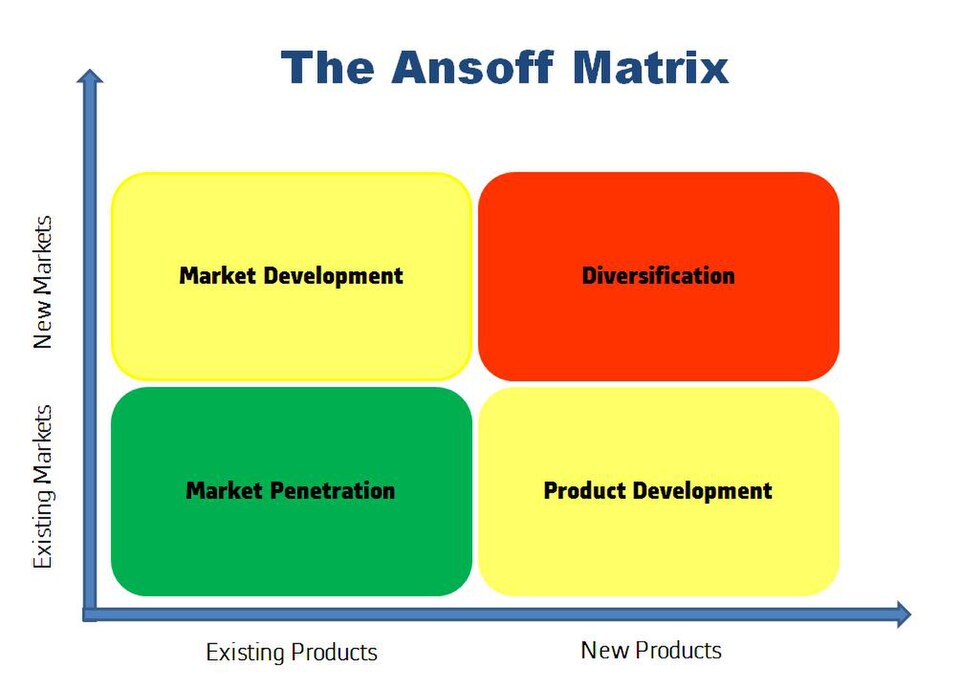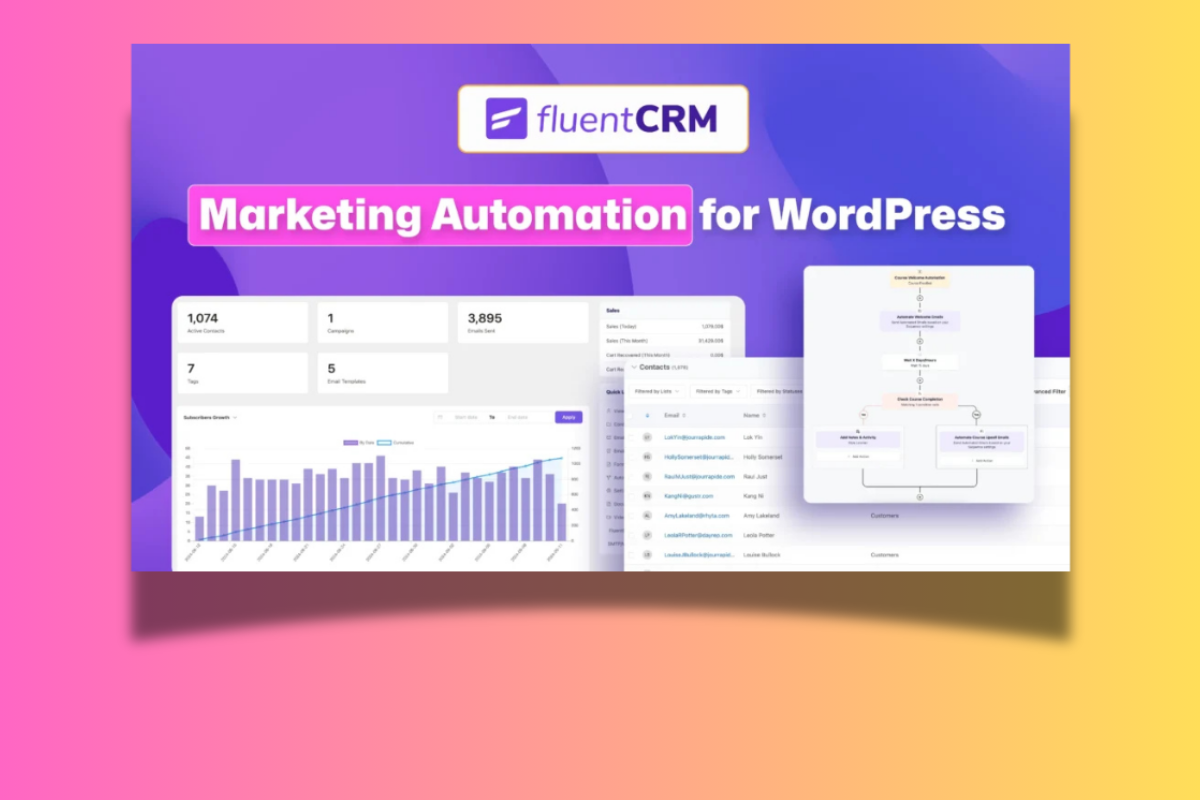What is The Ansoff Matrix?
The Ansoff Matrix is a strategic growth framework that helps businesses decide how to expand through four main strategies: market penetration, product development, market development, and diversification.
Here’s how it applies to content marketing for SMEs and small businesses:
- Market Penetration: Grow by increasing sales of existing products in current markets, often through tactics like SEO, blogging, or social media campaigns.
- Product Development: Create new products or content formats for your existing audience, such as webinars, guides, or apps.
- Market Development: Reach new customer segments or geographic areas with your current offerings, using localized or targeted content.
- Diversification: Launch new products in new markets, often testing with digital content before investing heavily.
For small businesses, the Ansoff Matrix is especially useful in content marketing, because it provides a simple roadmap for choosing growth strategies, clarifying priorities, and managing risk while staying cost-effective.
Most small business owners hear “strategy framework” and immediately picture a dusty MBA textbook. But the Ansoff Matrix isn’t just corporate jargon, it’s a dead-simple growth tool you can actually use to guide your content marketing.

Every business growth strategy fits into one of four boxes: market penetration, product development, market development, and diversification.
Sounds fancy, right? But in practice It’s just a way to decide whether you should go deeper with what you already have, add something new, or take a risk on fresh markets.
Let’s break down what this looks like in content marketing for small businesses, and why it matters.
1. Market Penetration: Go Deeper With What Works
This is the safest play: selling more of your current products to your current audience. In content terms, it means getting more visibility, more engagement, and more sales without changing what you’re offering.
Content plays here:
- SEO-driven blog posts answering the questions your customers already ask.
- Regular value-heavy newsletters to keep your brand not just in peoples’ minds but also helping them solve problems.
- Social media campaigns that remind people to come back, buy again, or refer friends.
Example: A local coffee shop already has a loyal neighborhood following. By blogging about “How to Brew the Perfect Cold Brew at Home”, they strengthen relationships with existing customers while expanding their reach for their e-commerce business to a significantly wider, national audience.
2. Product Development: New Content for the Same Audience
Here you’re still serving your current market but giving them something new to keep them engaged. In content marketing, that usually means new formats or experiences.
Content plays here:
- Webinars, video tutorials, or podcasts.
- Downloadable guides or templates.
- Exclusive content communities.
Example: A fitness studio that usually posts blogs and workout tips starts offering on-demand video classes via an app or inside a members section (cheaper to implement) on their site. Same audience, new content format with the goal of increasing revenue by targeting users you’ve already acquired.
3. Market Development: Reach New Audiences With Existing Offers
This is where content marketing gets powerful. Instead of reinventing your product, you reposition it for new audiences or geographies. This is one of the simplest growth levers any business can implement and the costs associated with doing it are extremely low.
Content plays here:
- Translate blogs into different languages.
- Create location-specific landing pages.
- Publish content tailored to new demographics or industries.
Example: A local bakery known for sourdough sees an opportunity with health-conscious eaters. They start a blog series on “Gluten-Free Baking at Home” and promote it to celiac and wellness communities online. Same ovens, same bakery but a brand-new customer base.
4. Diversification: New Stuff for New People
This is the riskiest box on the matrix. You’re launching new products and trying to attract new audiences at the same time. Content marketing allows SMEs and small businesses to mitigate risk by testing big ideas first before making any sizable investments.
Content plays here:
- Paid subscription newsletters or digital courses.
- Launching content around a new product line.
- Running micro-campaigns on social for new demographics.
Example: A fashion boutique normally selling women’s apparel launches a kids’ line. Instead of a full rollout, they test the waters with a blog series on “Styling Mini-Me Outfits” plus Instagram campaigns targeting parents. Content acts as the soft launch; low risk, high learning.
Why The Ansoff Matrix Matters for Small Businesses
Most small businesses wing it with content marketing. You might have a blog or a content section on your site, but too little time and attention goes into the type and quality of content you’re publishing.
It might be inconsistent, poorly targeted, or doled out to the intern. Either way, small businesses and SMEs need to take the potential ROI of content marketing more seriously.
The most successful businesses in the world do not rely on advertising to reach their audience; they employ teams of SEOs and content writers to build-up their image and brand through content.
This is how Canva scaled its business. It went from a start-up, nipping at Adobe’s heels to a multi-billion dollar company in the space of several years.
90% of buying decisions are made through search engines. Think about that: nearly all of your potential customers are simply a click away from your business.
All you have to do is find them with the right content and to do this you need a rock-solid, actionable content marketing plan.
With this in place and the right SEO methods, as well as utilizing things like the Ansoff Matrix, you can stop guessing about what you’re doing and start scaling your business.
Here’s what it does for you:
- Clarity: You know whether you’re trying to go deeper, broader, or completely new.
- Focus: Instead of spreading your budget thin, you invest where growth potential is real.
- Risk management: You can start small, test ideas, and avoid burning cash on content that doesn’t fit your goals.


